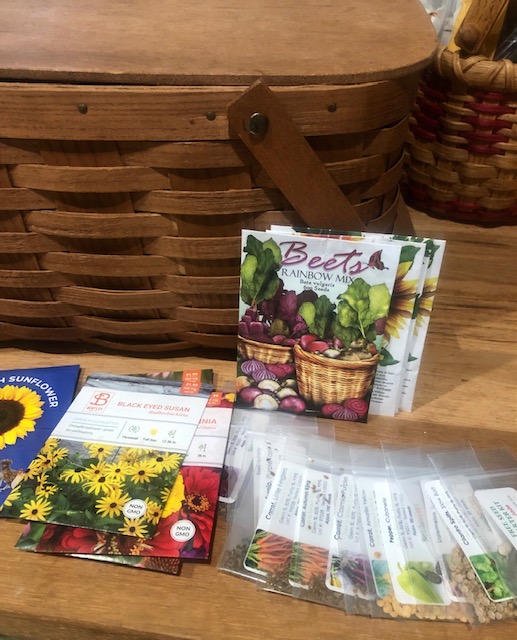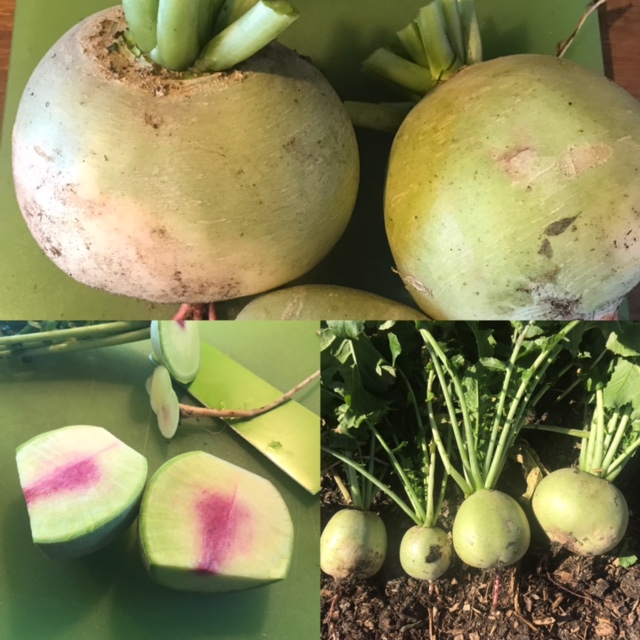I know most of the United States is in full swing gardening right now. Living in zone 9a, our gardening seasons are opposite of the rest of the country. We actually are super blessed and can garden pretty much year-round. Depending on where you live, now is a great time to start Planning A Fall Garden.
Make sure you check your frost dates. For the most part, we usually don’t have frost until January, sometimes in December. Fall is actually the kick-off to our garden season. Our garden is usually resting part of the summer, then we start Fall. That carries us into our Winter root crops and cold hardy plants. Then, we pick back up our warm plants in the Spring, which carries us through the first part of summer. I love the cycle of how we grow things. It’s fascinating to me how each season brings new life.
I taught a class the other night at our local community club about planning a fall garden. We had a pretty good turn out and I was all set with a slideshow that I worked on for hours. When I got there, we couldn’t find the right adapter haha, so I wasn’t able to show it. It was a great conversation too. I loved how we could all get together in one room and bounce ideas off of each other. We are building a nice homesteading community here in our little town and I’m loving it. I’ll share my video below and I hope it will inspire you to start your fall garden.
Get To Know Your Zone
The USDA Hardiness Zone Map divides North America into 13 separate planting zones. This includes Hawaii, Puerto Rico, and Alaska. Click on the map below and enter your zip code to find your zone. You can also find your zone HERE.
Clean Organic Make-up/Skincare While In The Garden
I love the way Toups & Co. feels on my skin. My favorite products are the Tallow Balms, Deodorant, Foundation, Eyeliner, and their Blush. Click HERE to learn more about Toups & Co.
Designing the Garden
Before you can even think about planting the fall garden, you must design it. Obviously, your garden area will look different from anyone else’s because of the space that you have to use. Maybe you will be planting in pots, a 4×4 raised bed, or even a 20×20 in-ground space on your property.
Most Import Design Tips
Here are my tips to make sure you design your garden and set it up at the beginning for success.
- Location – The first and most important thing you’ll need to decide on is the location. The location is going to be determined based on how much sun your garden area is going to get each day. Next, most vegetables (and fruits) thrive on at least six hours of sun a day. Spend some time in your yard and watch how the sun moves and make that determination on your garden placement. Finally, another important factor is to watch your garden when it rains to see how the water drains. You definitely don’t want to put your garden in a space that is prone to flooding.
- Water – The second important factor is to make sure you have a water source nearby. Ideally, you will want to have your garden near your home which allows it to be easier when it comes time to harvest.
- Soil – Having healthy soil is a must when designing your garden. I touch a little bit about this below. Using compost and organic matter will definitely allow your garden to grow beautiful healthy produce.
- Draw it Out – Now, get a sheet of graph or notebook paper and start drawing out your garden. This is the fun part! Use a pencil because there will be a lot of erasing haha. Draw out your space. You can do this to scale on your paper or just chicken scratch it. Just make sure you don’t skip this step. See below how I’ve drawn my gardens over years past.
Second Most Important Design Tips
- Lay out/Fencing – Measure your space with a tape measure. Very important and you’ll see why a few rows down. Decide if you are going to need some kind of fencing to keep out the chickens or dogs. Fences are great to not only use for the security of the vegetables growing but you can also use them as a trellis.
- Gardening Methods – Next, figure out what you are going to use to plant your seeds or starter plants in. Will you be using grow bags, buckets, pots, in-ground, or raised beds?
- Seed/Starter Selection – Write down a list of everything you want to grow. If you are just starting a garden for the first time, I highly encourage you to start slow. Maybe grow 4-5 things to start. Grow what you and your family actually eat on a regular basis. Once you start mastering the skill, start experimenting with other vegetable seeds. This will allow you not to become overwhelmed and you’ll continue next season. I want you to continue so you’ll have an amazing garden. Furthermore, you can start sharing your experience with your friends and family.
Grab that list of vegetables that you wrote down earlier. We’re going to lay out where you’re planting all of those in the next section.
My Garden Layouts From Years Past
Planning a Fall Garden
Now that we have the layout of the garden drawn out and the site is selected, it’s time to start writing in all those veggies you want to grow in the fall. As I said earlier, in zone 9, we can pretty much grow year-round. Make sure you check your zone and your first frost date. I can’t stress this enough. That will determine when you need to start your fall garden. We are backwards here in the South. I think a lot of states North of us, can start planting their fall garden in July. We start ours at the end of August. You can still use these principles no matter where you live. Check with your local Agriculture Extension office and they will be happy to help you with what grows best in your area.
So, before we start dropping seeds into the soil, there are a few things I’ve learned along the way that will come in handy for you as well.

My in-ground garden 2018 
Spring Harvest 
My in-ground garden 2018
Soil Matters
Creating a garden also starts with healthy soil. Living in the South, we deal with clay and sand. Now, we have a lot of plants and vegetables that grow in the those, however; adding in compost or manure really provides amazing nutrients to the plants.
The first thing you want to do is test your soil. You can contact your local Agriculture Extension Office and they will do it for you. All counties have them and they are usually attached to a state college. You can find the location nearest you HERE. Make sure to look for the section that says “extension”. It’s good to test your soil often to see if you are lacking or overproducing in minerals. I’ve never used them but it’s an option if you decide to go that route. You can also find tests online. Depending on the results of your test, you may need to add additives to your soil.
Compost
Next, start a compost pile. I plan on writing a separate post about this in the future but here are the nuts and bolts of starting one. You basically are going to add “browns” and “greens” to your pile. Browns are things like leaves, straw, hay, cardboard, etc. and your greens are going to be vegetable/fruit scraps, coffee grounds, grass clippings, eggshells, etc. In addition, if you have any livestock manure, such as cow, you can add that in as well.
Companion Planting
This was a game-changer for me when I started companion planting. You may find mixed reviews about it and that’s ok. I just want to share why I love adding certain plants with other plants. You can certainly plant beans alone and they will grow or even cucumbers but there are some benefits to companion planting.
- Improves growth & nutrition
- Repels insects
- Enhances pollination
For instance, I plant Marigolds in pretty much every one of the beds. They really do ward off any pests. I also love planting basil with my tomatoes. They both thrive and grow great yields. This might be a personal preference, but I thought it might be helpful to mention companion planting in case you have never heard of it. I worked really hard preparing this and I hope it truly helps you thrive in your garden. Download my FREE COMPANION PLANTING GUIDE below.
Disclaimer: All free and printables on my website are to be used for personal use ONLY. No commercial use is allowed. These items are not to be sold. If you’d like to share with your friends, please share this post with them. The more you share, the more I’ll reach like-minded people like you and I. If you agree, then hit that download button.
Now that you’ve downloaded my companion planting guide, take that list of vegetables you wrote down back in the design stage and start adding in plants that will grow well with what you want to grow. It’s that easy!
Succession Planting
Years ago, I learned to plant my seeds every few weeks apart. This is called succession planting and will allow for a continuous supply of that vegetable throughout the growing season. For instance, I don’t have time to pick all of the green beans at once. When you plant them every few weeks, you’ll have less to pick but more to pick, if that makes sense.
PIN FOR LATER

Using Organic Seeds
We can direct sow here in Florida pretty much all year long. So, I keep a large inventory of seeds on hand lol. Ok, maybe I have a seed buying problem haha. I only have a few trusted seed companies I’ve used over the years. When looking for seeds, make sure they are heirloom, non-gmo and organic. You want to make sure that the seeds you purchase are not treated with a fungicide. Companies do this to make sure the seeds do not develop a fungus but you really don’t want the chemical going into our bodies. I’ve never had a problem with my seeds developing fungus in the 14 years I’ve been gardening.
Here are some seed companies that I trust and recommend:

Vegetables to Plant in the Fall
Depending on where you live, Fall gardening can still bring in those warmer crops. Here are some great vegetables to add to your Fall garden.
- Broccoli
- Cabbage
- Celery
- Collards
- Corn
- Cucumbers
- Eggplant
- Green Beams
- Kohlrabi
- Onions
- Peppers
- Radish
- Squashes (both Summer and Winter)
- Tomatoes
- Zucchini
- Watermelon
Join Our Simple Living Community
I hope all of this was helpful and not overwhelming haha. Please feel free to email me at [email protected] if you have any questions. Follow along on my Instagram and I’ll be sharing all about my Fall Garden Planning.





















Leave a Reply